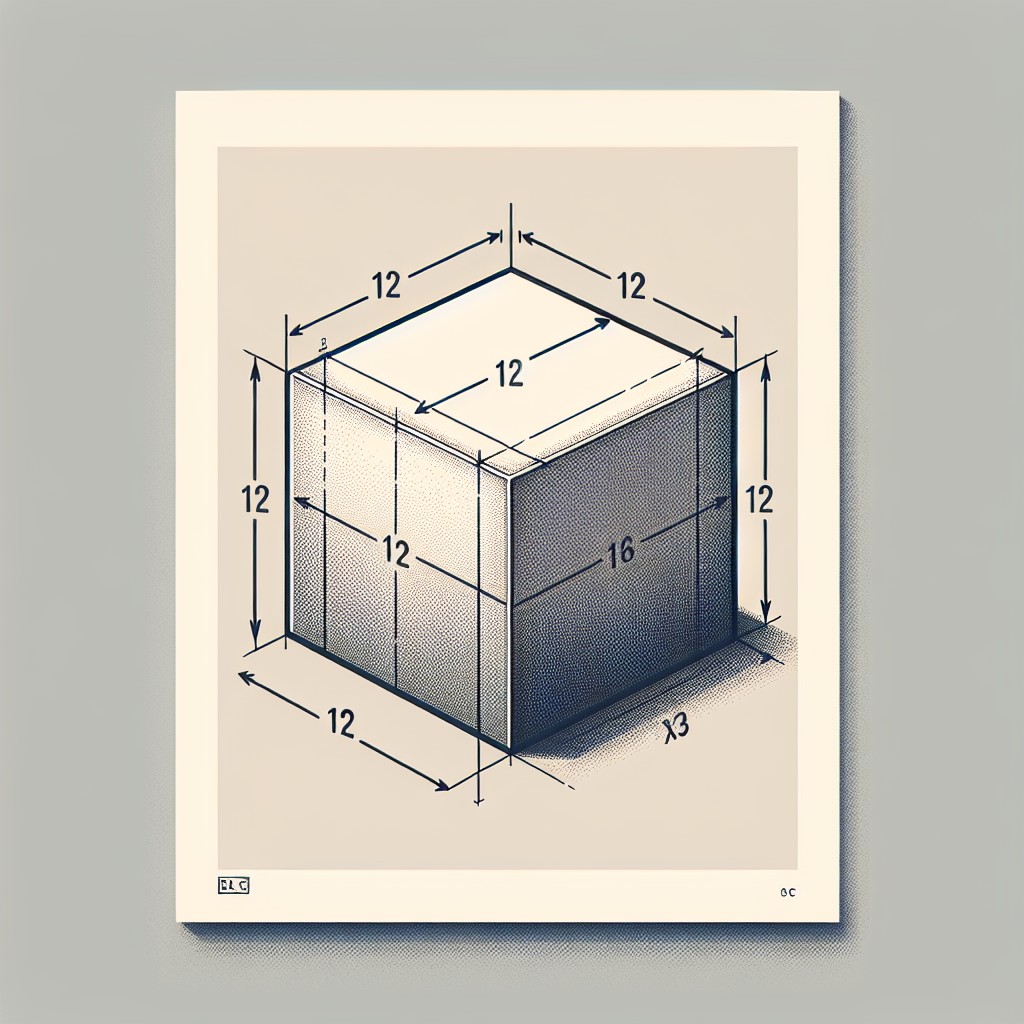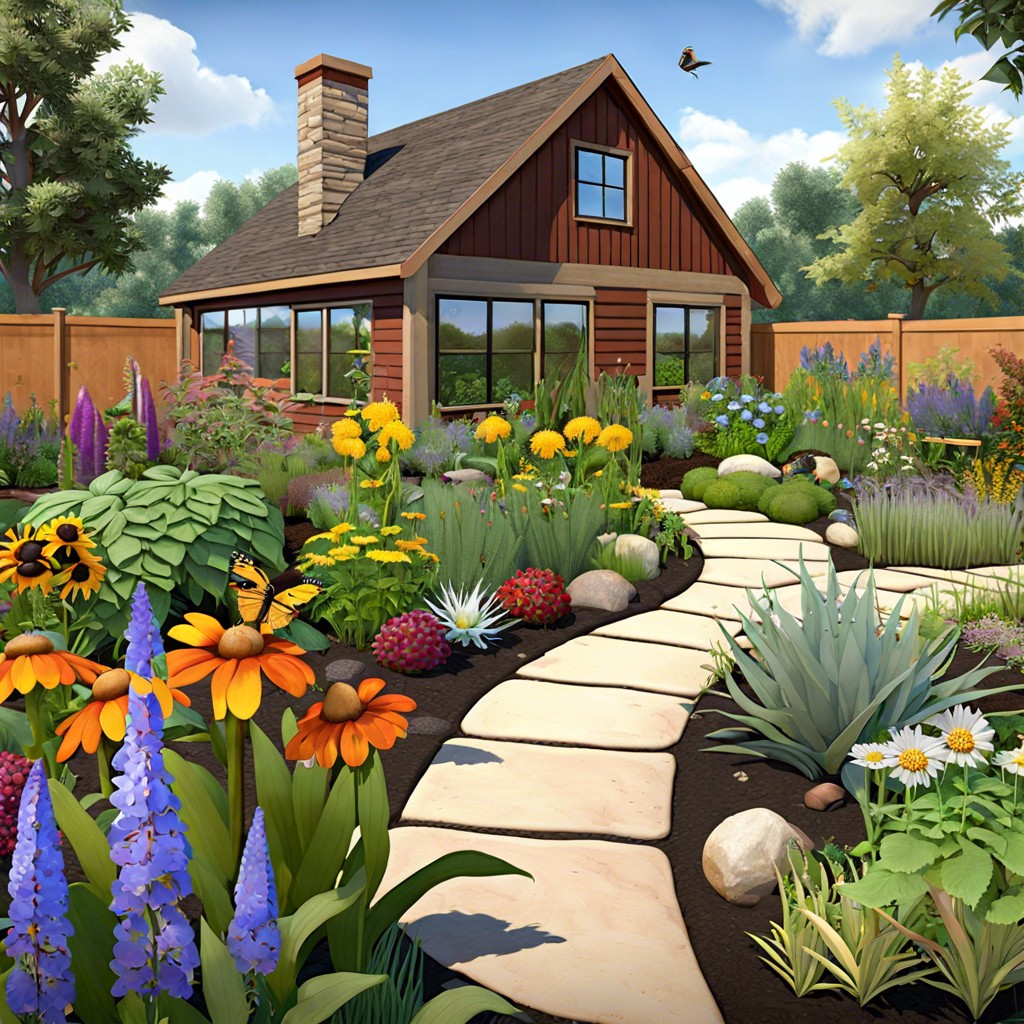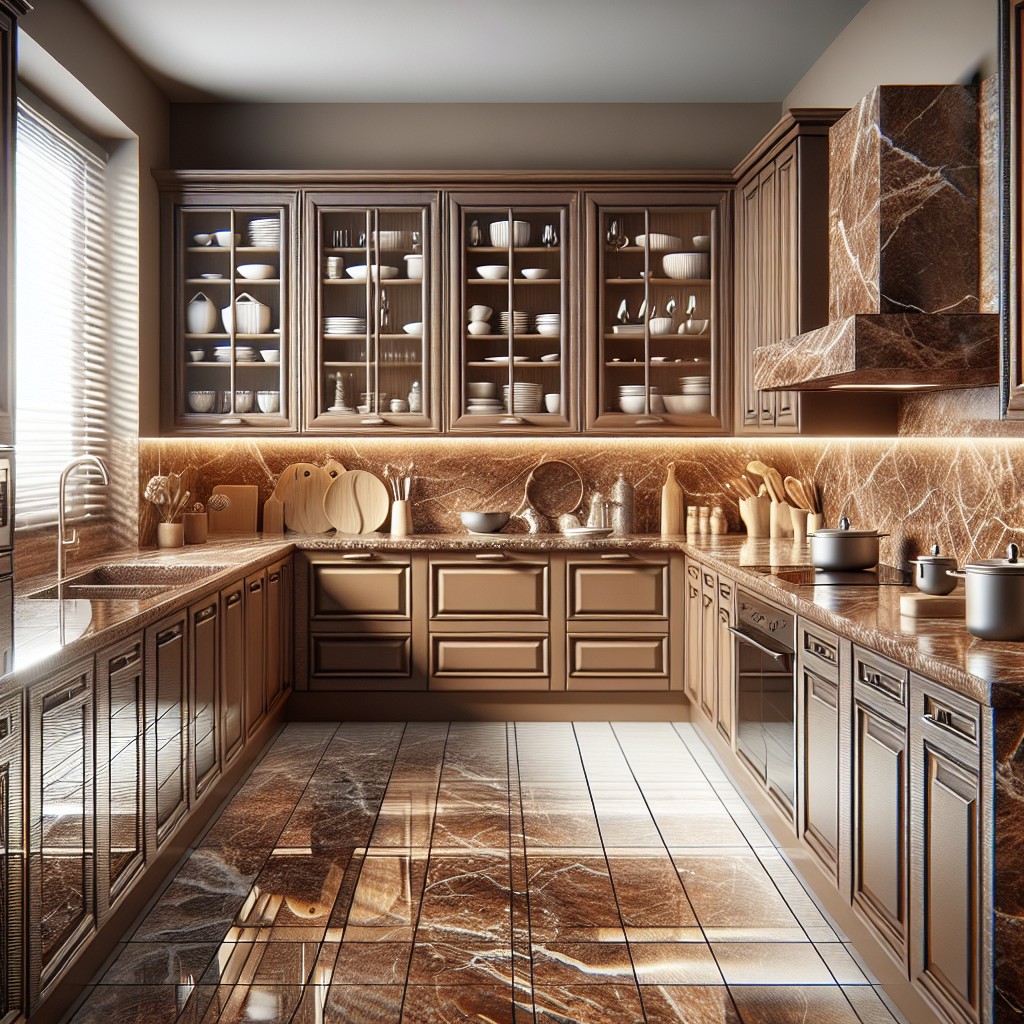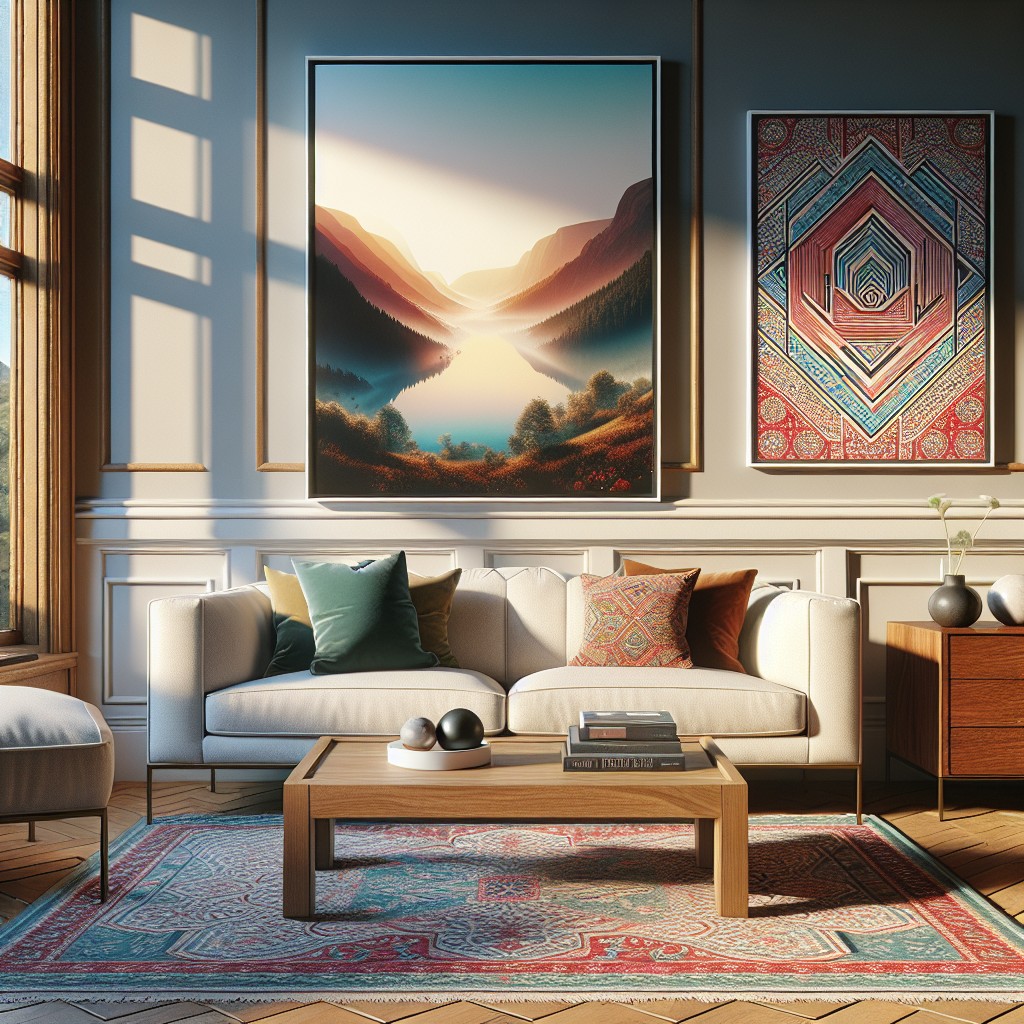Last updated on
Delving into the complexity of measurements, we will dissect the dimensions of a 12×16 size, applying it across a variety of contexts including printing, painting, photography and room dimensions, to enlighten us about its profound implications in everyday life.
Key takeaways:
- 12×16 typically refers to a rectangular shape measuring 12 inches by 16 inches.
- It is slightly larger than a standard sheet of printer paper.
- The measurement can also be expressed in feet, representing a space that’s 12 feet by 16 feet.
- In surface area, 12×16 equates to 192 square inches or 192 square feet.
- In the world of art posters, 12×16 is a versatile size that fits standard frames and showcases detailed artwork.
What's Inside
Understanding 12×16 Dimensions

When we talk about 12×16, we typically refer to a rectangular shape measuring 12 inches by 16 inches.
To put it in perspective, consider it slightly larger than a standard sheet of printer paper, which is 8.5×11 inches.
This measurement can also be expressed in feet, pointing to a space that’s 12 feet by 16 feet, common for rooms or outdoor sheds.
It’s crucial to remember that the first number usually represents the width, while the second denotes the height or length, depending on the orientation.
In surface area, 12×16 equates to 192 square inches or, in the case of feet, 192 square feet, providing an ample canvas for various uses, whether it’s showcasing artwork or planning an interior space.
For those who are more visual, a 12×16 inch rectangle could resemble the size of two standard iPads placed side by side lengthwise.
This not only offers a relatable visual cue but also provides a sense of scale that can be helpful when planning purchases or projects that require precise sizing.
Contextualizing 12×16 in Everyday Objects

When visualizing the size of 12×16, consider common items to contextualize its dimensions.
Picture a large laptop, which typically has a 17-inch screen; 12×16 is as if laying two of these screens side-by-side, with room to spare.
Envision the surface area of a standard microwave oven, which often matches or is slightly smaller than the footprint of 12×16 inches.
For outdoor enthusiasts, this size is akin to a medium-sized camping mat.
Lastly, it’s comparable to an average car tire with the added length of a few inches for a more tangible reference.
These comparisons make the 12×16 measurement tangible, bridging the gap between abstract numbers and the physical world.
12×16 in Art Posters
In the world of art posters, a 12×16 inch dimension serves as a sweet spot for many enthusiasts. It’s large enough to showcase detailed artwork and striking enough to serve as a focal point in a room without overwhelming the space. This size is also quite versatile when it comes to framing; it fits into standard frames, which makes it easy to find a suitable display case that enhances the art without the need for custom framing.
Artists often choose this size for limited edition prints. It provides ample canvas for their work while remaining accessible for fans and collectors who may have limited wall space. When displayed in a gallery setting, 12×16 inch prints comfortably hang side by side, allowing for an exhibition that can accommodate a number of works in a cohesive manner.
For buyers, 12×16 inches is a manageable size that doesn’t typically require professional installation. It’s simple to handle and hangs with basic hardware, ensuring art lovers can swiftly and securely exhibit their new acquisition. Whether it sits in a cozy corner or takes pride of place above a mantle, this measurement brings a professional touch of gallery aesthetics into the home.
Mounted Posters: Maximizing Visual Impact
When displaying a 12×16 poster, elevation off the wall can magnify its allure. This is where mounting comes into play. A mounted poster doesn’t require a frame, standing strong on its own with a rigid backing, offering a clean, modern look. To ensure your poster steals the show, consider the following:
- Contrast and Background: Choose a wall color that accentuates your poster. The right backdrop makes a 12×16 piece pop, be it in a crowded hallway or above a minimalist desk setup.
- Spotlighting: Proper lighting can transform a mounted poster into a focal point. Aim for gallery-style spotlights that draw eyes directly to the artwork, rather than relying on ambient room lighting.
- Positioning: Hang at eye-level in areas of frequent traffic for maximum visibility. In larger rooms, a 12×16 mounted poster could serve as an anchor piece around which other decor elements orbit.
- Spacing: Avoid clutter. Surround your poster with ample space to let its size and message breathe, giving it the stage to make a bold statement.
These strategic moves ensure that your 12×16 mounted poster isn’t just another piece on the wall, but a statement of your style and personality.
Calculating Square Footage: A 12×16 Case Study
Let’s dive straight into the math behind 12×16. Square footage is a measure of area, and calculating it is straightforward: multiply the length by the width. In this scenario, we multiply 12 feet (length) by 16 feet (width), resulting in 192 square feet.
Here are some insights to put that number into perspective:
- Flooring Projects: If you’re planning to install new flooring in a 12×16 room, you’ll need 192 square feet of material. Always buy a little extra to cover any mistakes or irregular pieces.
- Painting Considerations: When painting, a gallon typically covers about 350 square feet. For a 12×16 space, you’d likely need less than a gallon, but consider multiple coats and the paint’s spread rate on your specific walls.
- Space Planning: Whether it’s an office, bedroom, or living space, understanding that 192 square feet is at your disposal helps in planning where to place furniture without overcrowding.
Remember, precise measurement is key. Even a slight discrepancy in measurement can cause a substantial difference in the calculated area, affecting project estimations and budgets.
Room Layouts and Furniture Placement Within 12×16 Feet
Navigating the logistics of arranging furniture in a space measuring 12 by 16 feet requires a blend of practicality and creativity. To effectively utilize every inch, consider the following points:
- Establish a Focal Point: Identify the room’s central feature, whether it’s a fireplace, a large window, or an entertainment unit. Position seating around this focal point to create a harmonious flow.
- Balance and Proportion: For a room this size, avoid overcrowding with oversized furniture. Opt for a medium-sized sofa complemented by a couple of accent chairs to maintain a comfortable scale.
- Traffic Flow: Allow at least 2 to 3 feet of walking space around furniture to facilitate smooth movement through the room. This space will enable you to navigate effortlessly without bumping into corners.
- Functionality First: Determine the primary use of the room, be it lounging, dining, or sleeping, and place furniture accordingly. For example, in a bedroom scenario, ensure there’s adequate space around the bed for nightstands and access.
- Rug Placement: A well-placed area rug can define the sitting area and tie the room’s elements together. A rug size of 8×10 feet can anchor the arrangement without overwhelming the floor space.
Utilizing each square foot wisely can turn this moderately sized room into a comfortable, functional, and aesthetically pleasing space. Remember, careful planning is your ally in achieving a balance between style and utility.
File Size & Bleed for Perfect 12×16 Prints
When preparing images for printing at a 12×16 inch size, file resolution is key to ensuring clarity and sharpness. Aim for a resolution of at least 300 dots per inch (DPI). This translates to a digital file with pixel dimensions of 3600×4800, ensuring your print is crisp.
Incorporating bleed is an essential step, especially when your design extends to the edge of the print. Add an extra 0.25 inches on each side, modifying the total dimension to 12.5×16.5 inches. This allows for slight trimming discrepancies and prevents any unprinted edges from showing.
For the file format, TIFF or JPEGs at the highest quality setting are ideal choices. These formats are widely accepted by professional printers and preserve the integrity of your image details and colors.
Keep in mind color profiles as well; using CMYK color mode is standard for prints, as it aligns with printer ink colors and ensures that the colors you see on screen are closely matched in print.
Finally, running a proof before a complete print run can save both time and resources. It’s a real-life sample that can help you spot any potential issues before committing to the entire batch.
Comparing 12×16 to Other Popular Poster Sizes
If you’re familiar with the standard 8×10, a 12×16 poster offers significantly more real estate. This larger format allows for bolder designs and greater detail. It is often likened to an A3 paper size, which is approximately 11.7×16.5 inches. The small bump in size might seem minor, but visually, it’s a game-changer for artwork display.
On the other hand, the 18×24 is like the grown-up sibling to 12×16. This size is a staple for artists and exhibitions because it commands attention without overwhelming a space. It’s the Goldilocks of poster sizes—just right for most needs.
Consider a 24×36, the go-to for movie posters. Next to a 12×16, it’s a leap in presence and impact, transforming any wall into a focal point. Yet, for intimate spaces or galleries, the 12×16 can offer a balance of visibility and restraint that larger sizes might not afford.
When weighing options, remember that a 12×16 is versatile for both personal spaces and smaller showings, allowing art to be the star without the need for a vast canvas.
Budgeting for 12×16 Prints and Associated Costs
Budgeting for prints can be as critical as selecting the right image. Here are key points to consider:
1. Material Costs: Choose between glossy, matte, or canvas prints. Glossy versions often cost less but canvas provides a premium look at a higher price.
2. Printing Services: Costs can vary depending on whether you opt for local print shops or online services. Bulk orders may offer savings, so consider purchasing multiple prints at once.
3. Custom Framing: If framing is desired, factor in the expense based on the framing material, with metal being a budget-friendly option and wood a pricier one.
4. Shipping Fees: When ordering prints online, don’t overlook shipping fees. Larger dimensions like 12×16 inches may incur increased costs.
5. Sales and Discounts: Watch for deals from print shops. Signing up for newsletters or following social media can alert you to potential savings.
6. DIY vs. Professional Printing: Weigh the investment in a high-quality home printer versus the recurring cost of professional prints. Long-term, one option may emerge as more economical than the other.
Remember, a well-budgeted project ensures your 12×16 prints turn out beautifully without breaking the bank.
Checking Yard Space for a 12×16 Shed Installation
Before committing to a shed of this size, ensure your yard can accommodate it with ease. First, measure out an area of 192 square feet (the total area covered by a 12×16 foot structure). Use stakes and string for visual placement and consider extra space for doors to swing out or any overhangs.
Assess accessibility, keeping in mind how you’ll reach the shed through your yard—avoid narrow pathways or tight corners. Consider local building codes which may dictate how close structures can be to property lines or require permits for sheds above a certain size. Remember, proper ventilation and clearance from fences or property lines reduces the risk of moisture damage and maintains good neighborly relations.
Check for overhead hazards; tree limbs and power lines can be problematic for high sheds. Finally, the ground level is essential for structural integrity—a level base will prevent future leaning or warping. Use a long level or laser level to check the flatness of the designated area before installation begins.
FAQ
How large is a 12×16?
A 12×16 area would equate to an interior usage space of approximately 162.84 square feet.
What size is a 12×16 print?
A 12×16 print, often termed as ‘Tabloid-Extra’, is a widely recognized standard in the industry, predominantly known for photography reproductions, business ads, and band flyers.
How big is a 18×24?
An 18×24 measurement refers to an area of 18 inches by 24 inches, a size commonly seen in art prints, concert posters, and promotional materials.
What size is a 10×15 photo?
A 10×15 photo measures 254 x 381 mm or 10 x 15 inches.
What dimensions does a 14×20 frame encompass?
A 14×20 frame encompasses dimensions of 14 inches in width and 20 inches in height.
How expansive is a 16×20 canvas?
A 16×20 canvas measures 320 square inches.
Are there common objects that measure approximately 13×19 inches?
Yes, common objects measuring approximately 13×19 inches include large posters, medium-sized placemats, and tabloid-sized pieces of paper.




